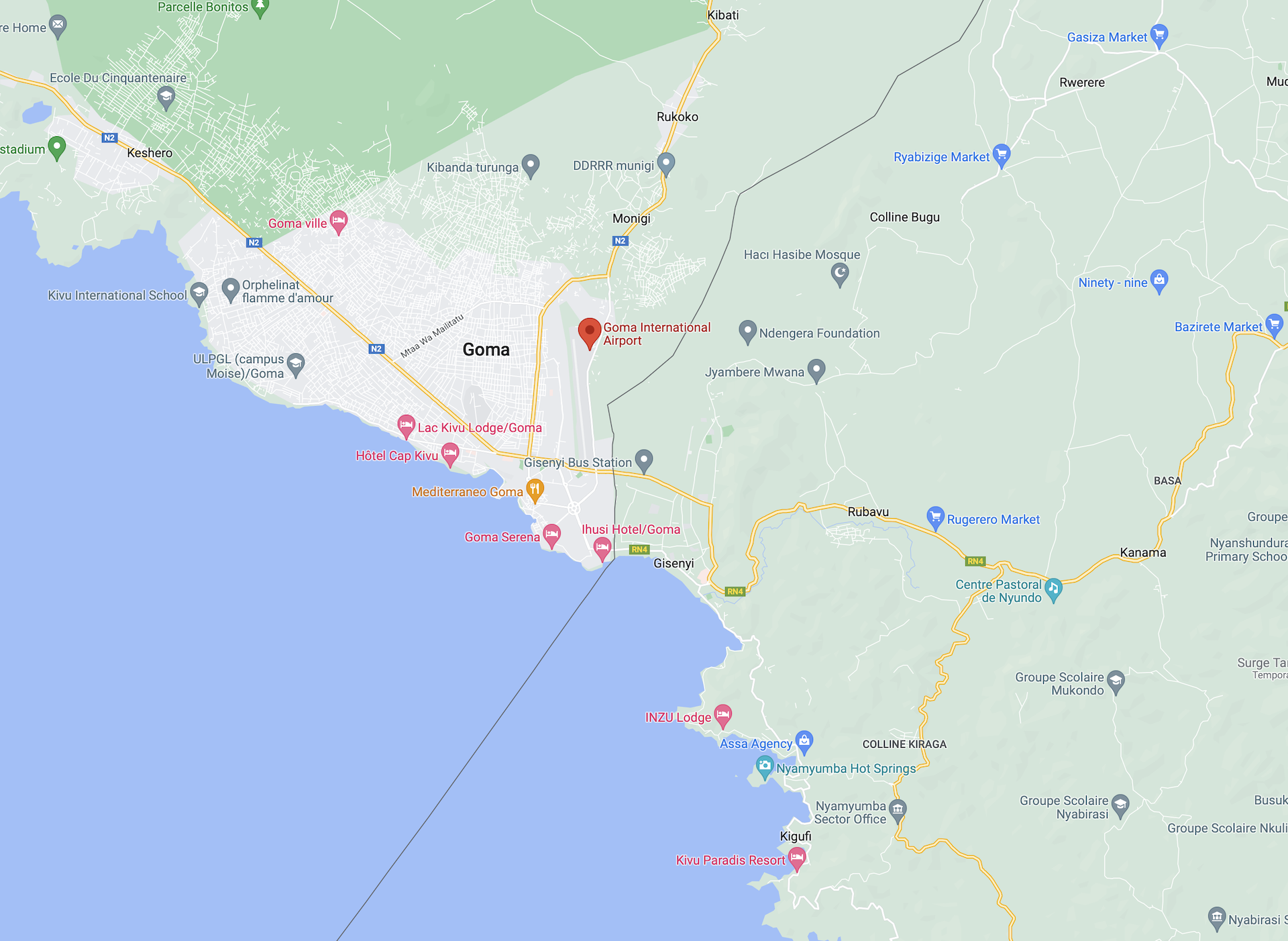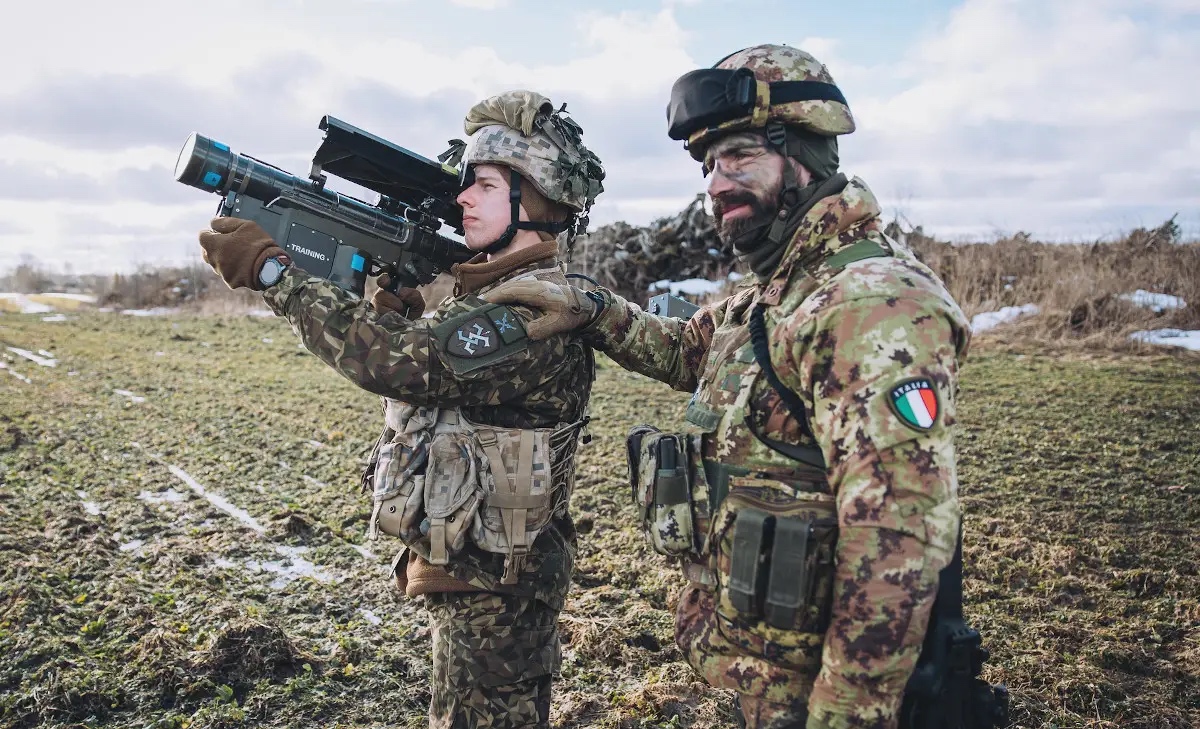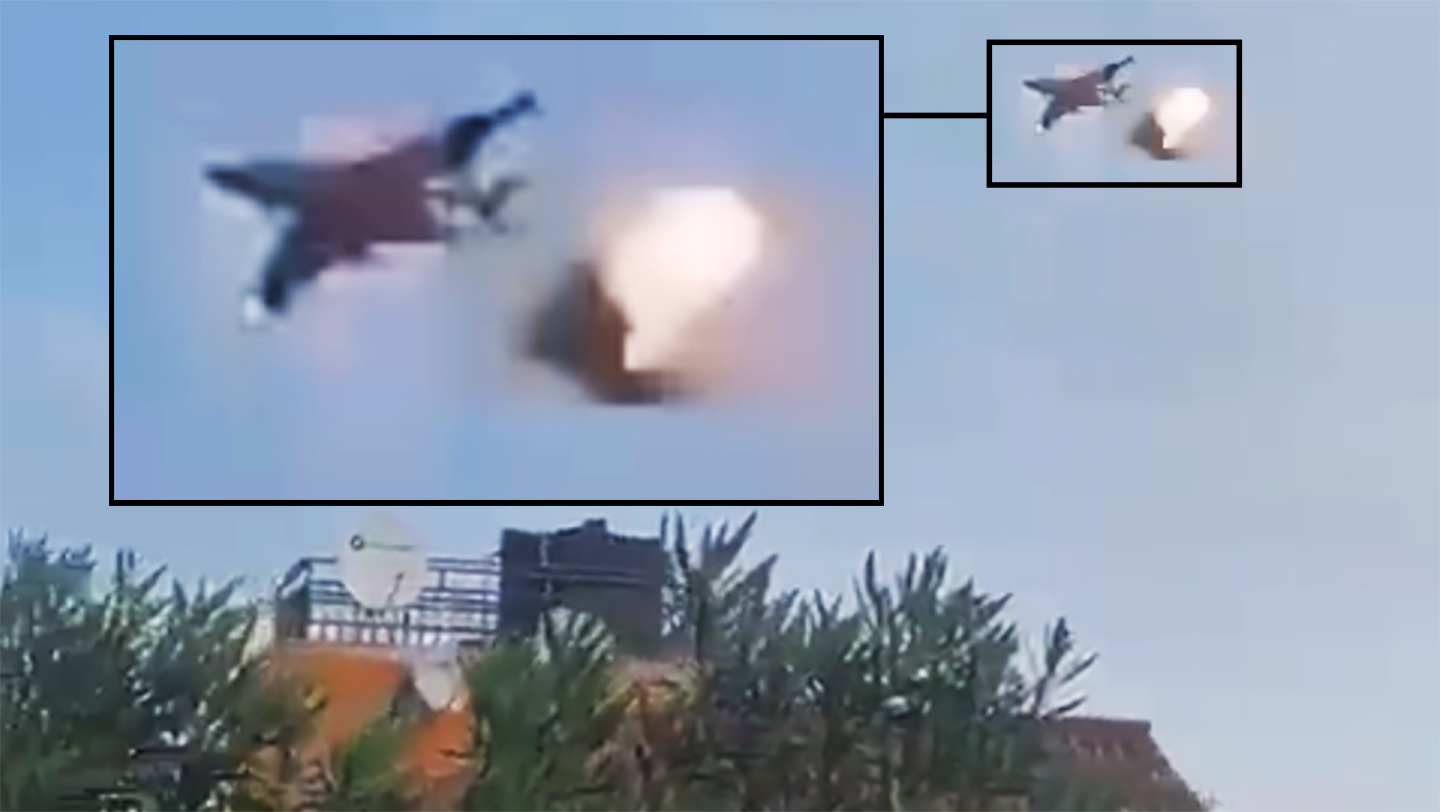A remarkably clear view of a low-flying tactical jet being attacked has emerged out of the Democratic Republic of Congo (DRC). Footage of the incident, which has been circulating on social media, shows a low-flying Sukhoi Su-25 Frogfoot belonging to the DRC being struck by a surface-to-air missile – most likely a shoulder-fired surface-to-air missile often referred to as a man-portable air-defense system, or MANPADS.
In the video, we see the Su-25 flying at very low altitude above a residential area. As the aircraft moves across the frame, with onlookers watching, a missile streaks towards the Su-25 and an explosion occurs in close proximity to its tail. The sound of the detonation reverberates, and the camera quickly lowers to the ground.
The pilot was able to land the aircraft, footage and images of which have also been circulating online. The impact of the missile resulted in a fire being ignited towards the rear of the aircraft, with one of its horizontal stabilizers suffering noticeable damage.
Interestingly, the close-up images of the damaged Congolese Su-25 give a clear view of its payload. This appears to include six B-8 series pods. Each is capable of carrying 20 of the Soviet-era S-8 unguided rockets, or 120 total. Unguided rockets like the 80mm S-8 are direct-fire weapons, which means they need to follow a relatively straight line to the target in order to hit it with accuracy.
Responsibility for the attack, which took place shortly after 5:00 P.M. local time on January 24, has been claimed by the Republic of Rwanda. In an official statement released by Rwanda’s Office of the Government Spokesperson on January 24, it was noted that a Su-25 from the DRC “violated Rwanda airspace,” resulting in “defensive measures” being taken.
In response, the DRC strongly condemned the actions of Rwanda, labeling the strike as a “deliberate act of aggression that amounts to an act of war.” “The Rwandan shooting was directed at Congolese aircraft flying inside Congolese territory,” the statement continues. “In no circumstances did it [the Su-25] fly over Rwandan airspace.”
More specifically, the DRC also claimed that the incident took place above the city of Goma, the capital of the DRC’s North Kivu province. According to the DRC government, the Su-25 was struck as it began its landing at Goma’s international airport. The airport itself is located just over a mile away from the border separating the DRC and Rwanda, where tensions on the ground between the neighboring African countries have crystalized in recent months.

Similar claims that DRC Su-25s have violated Rwanda’s airspace have been made by the Rwandan government of late. Back in November 2022, Rwanda released a statement arguing that a DRC Su-25 briefly touched down at Rwanda’s Rubavu airport in the country’s Western Province, which resulted in “no military action” being taken. Rwanda also claimed that the DRC’s government “acknowledged the incident.”
Then, in December 2022, Rwanda released a second statement arguing that another DRC Su-25 fighter entered Rwandan airspace before immediately returning to the DRC. “These provocations must stop,” the December statement noted.
While it’s not immediately clear which of the DRC’s Su-25s was involved in the incident on January 24 – it’s been suggested that the aircraft in question could be Su-25 FG-505 – the DRC only possesses a very small Su-25 fleet.

According to the 2023 World Air Forces Directory, the Force Aérienne Congolaise (Congolese Air Force) operates a total of seven Su-25s. Key Aero suggests that four factory-fresh Su-25s were supposedly acquired by the DRC in 1999 from the Georgia-based Tbilisi Aircraft Manufacturing (TAM) firm. Two further Su-25s were purchased by the DRC from surplus Ukrainian Air Force stocks in late 2012 – which were originally supposed to go to Chad – with delivery believed to have taken place in early 2013. These aircraft were purchased, Key Aero suggests, to replace two of the original Georgia-supplied Su-25s lost by the DRC in accidents in 2006 and 2007. If the World Air Forces’ estimate is to be believed, three additional Su-25s have been purchased by the DRC since 2013.
Originally built for close-air support, the Su-25 was distributed throughout the former Soviet Union in the 1980s and to about two dozen other countries. More than a thousand Frogfoots have been built. In more recent years, the jets have remained highly active in various conflicts, most notably in Syria and the war in Ukraine.

If the attempted shootdown of the Su-25 was indeed the result of a shoulder-fired missile this wouldn’t be anywhere near the first time these weapons have been used against those aircraft specifically. Su-25s have proven vulnerable to MANPADS, over the years. Just the envelope the aircraft operate in — low over the battlefield and not remarkably fast — makes them especially so. Ukraine took heavy losses of Su-25s early in Russia’s initial invasion of Ukraine in 2014. Russia also took Frogfoot losses in Syria.
More recently, Russia’s all-out invasion of Ukraine has reinforced the effectiveness of MANPADS in downing these, and other forms, of aircraft. Large numbers of U.S.-made Stingers and other advanced western types have poured into the country, which, along with other short-range air defenses, has taken a particularly brutal toll on the Frogfoot. In fact, the type has taken the brunt of Russia’s aerial losses since it launched its widescale invasion nearly a year ago. There have been 25 visually confirmed losses of Russian Su-25s, and the actual number is likely significantly greater. Ukraine has also lost further examples of the type.

Of course, the attempted shootdown of the DRC Su-25 sits within the broader context of recent tensions between that country and Rwanda over unrest in the eastern DRC. DRC Su-25s have played a key role in targeting M23 rebels in that area. In November 2022, for example, two DRC Su-25s performed bombing raids on the M23-held Tchanzu area of North Kivu. Rwanda is accused by the DRC, the U.S., the U.N. and other Western allies of supporting the M23 rebel group, which was formed in 2012. It had the stated aim of defending ethnic Tutsis living in the DRC against Hutu militias. Rwanda denies accusations of backing the group.
In the end, the video also serves as a testament to the hardy Su-25. This one took a close-proximity missile hit and landed safely while on fire. The jet could very likely fly again as the type is well known for ease of repair.
Contact the author: oliver@thewarzone.com
